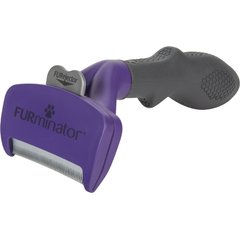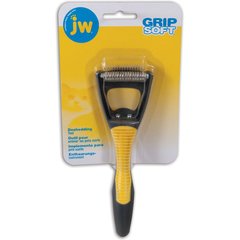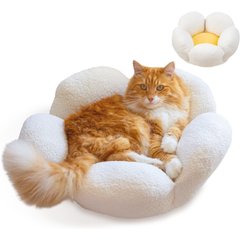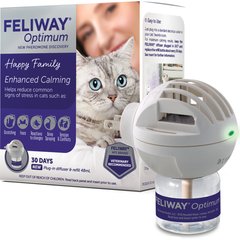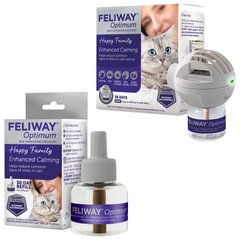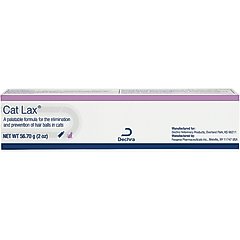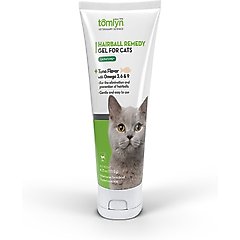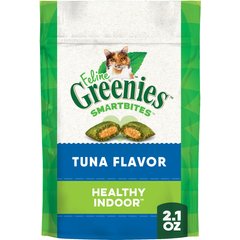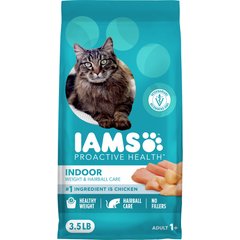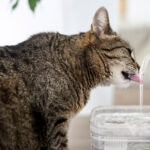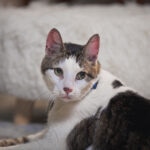What Are Cat Hairballs? How Can I Prevent Them?
If you’re a cat parent, you know the feeling: that icky panic you feel when, out of nowhere, you hear your kitty heaving and hacking dramatically. It’s a cat hairball—a not-so-uncommon occurrence for felines that you’d like to make, well, less common in your everyday life.
Ahead, we’re covering everything you need to know about hairballs in cats, including causes, remedies, and most essentially, prevention.
Key Takeaways
- Hairballs are normal but can indicate health issues if frequent or severe.
- Long-haired cats and overgroomers are more prone to hairballs.
- Regular grooming and calming strategies can reduce hairball formation.
- Talk to your vet about diet changes and hairball remedies if issues persist.
What Are Cat Hairballs?
Medically referred to as a trichobezoar, a cat hairball is a tubular-shaped, dense wad of soggy hair that a cat throws up. Doing so usually is a full-body effort and can elicit some highly unpleasant sounds. So, what’s happening physiologically to a cat’s body when they’re hacking up a hairball?
“[When cats groom], they will normally ingest some amount of hair in that process,” says Erin Katribe, DVM, medical director for Best Friends Animal Society based in Kanab, Utah. “That hair typically passes through their gastrointestinal tract and is passed in feces.”
“In some situations, either there is too much hair being ingested to move through [the body],” Dr. Katribe continues, “or something is causing the hair to be unable to pass.”
When a hairball is formed, the hair gets trapped and slowly collects in the cat’s digestive tract.
What Are the Signs of Cat Hairballs?
If your cat is struggling with hairballs, you might notice the following signs:
- Frequent gagging or retching without bringing anything up
- Hacking or coughing that sounds like they’re trying to clear their throat
- Vomiting a tube-shaped mass of fur
Occasional hairballs are usually considered normal. However, if they become frequent, your cat shows signs of distress, or they are extremely large, then a vet visit is recommended. It’s important to make sure there are no underlying health issues and to get advice on hairball treatment for your cat.
Cat hairballs are different from vomit. Hairballs are typically cylindrical wads of fur, sometimes mixed with food or bile, while vomit is more liquid and irregular in shape, often containing yellow bile or undigested food.
What Causes Cat Hairballs?
Infrequent hairballs—about once every month or so—aren’t cause for alarm, but if your cat has multiple hairballs a week, it could be a sign of overgrooming or a gastrointestinal issue.
“Long-haired breeds, such as Maine Coons and Persians, are more prone to hairballs due to their thick coats and frequent grooming needs,” explains Seth Schwartz, DVM, a veterinarian for Paws at Peace in Vero Beach, Florida. “Overgrooming, which can stem from anxiety, allergies, or pain, also increases hairball formation.”
Commonly overgroomed areas include the belly, inner thighs, and legs.
How Do Veterinarians Manage Cat Hairballs?
Frequent or severe hairballs may indicate an underlying problem with your sweet feline, such as:
-
-
- Inflammatory Bowel Disease (IBD)
- Lymphoma
- Food allergies
- Intestinal parasites
-
They should be managed to prevent discomfort and distress.
Consult your veterinarian if your cat is experiencing:
-
-
- Excessive vomiting of hairballs, more than once per month
- Constipation
- Lethargy
- Appetite loss
- Signs of discomfort
-
Veterinarians manage cat hairballs by recommending dietary adjustments, such as adding fiber or specialized hairball control cat food that aids digestion and passage of fur. They may also suggest lubricating treatments.
In severe cases where a hairball causes an obstruction, surgical intervention may be necessary.
How Do I Prevent Hairballs in My Cat?
There are a handful of ways you can prevent or manage cat hairballs at home.
Brush Regularly
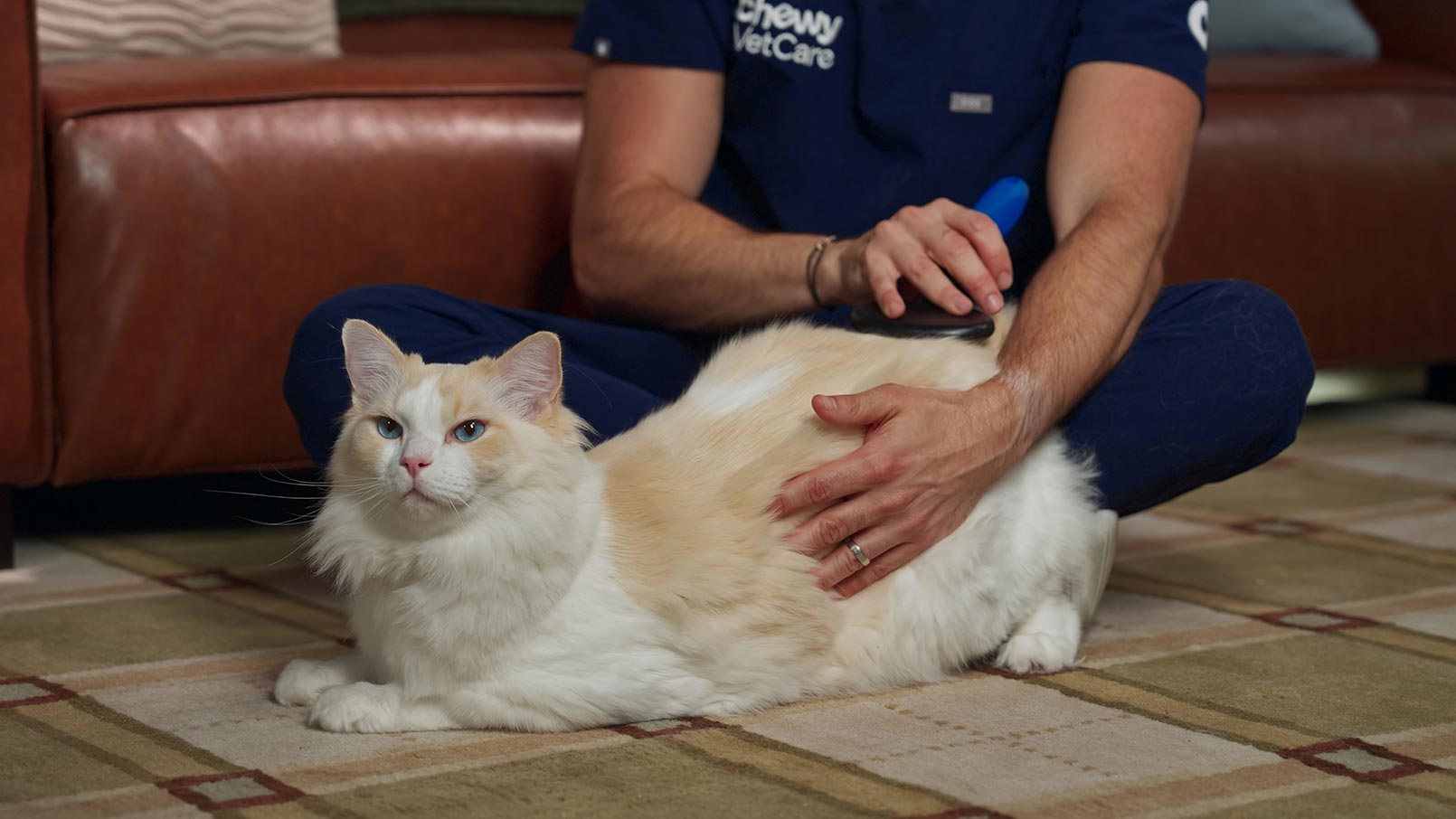
Photo by Chewy
One of the best ways you can help reduce or prevent your cat from getting hairballs is by regularly brushing them, Dr. Schwartz says. After all, what ends up in that deshedding brush won’t end up being ingested.
Recommended Products
Curb Excessive Grooming
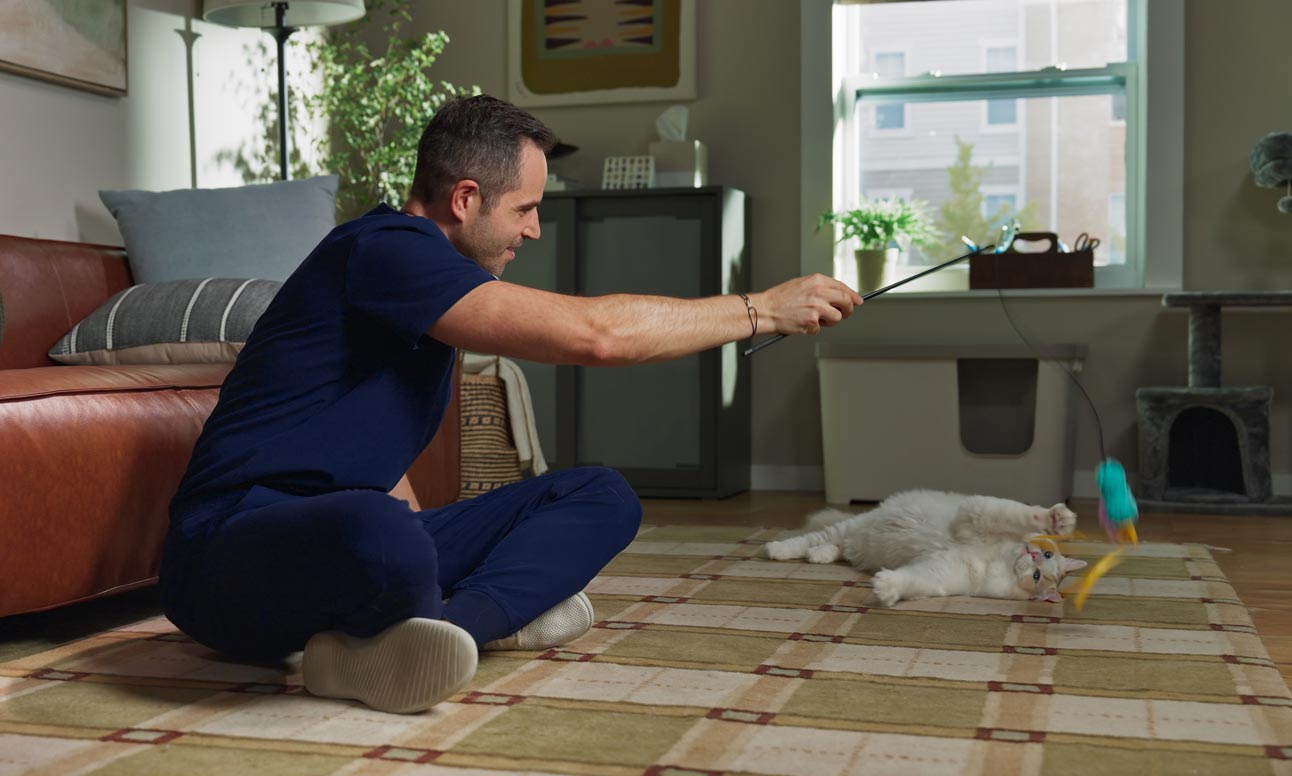
Photo by Chewy
It’s important to schedule an exam with your veterinarian if your kitty is overgrooming. They can rule out any potential causes of pain or underlying skin issues that could be causing your cat to groom excessively.
Once medical issues have been ruled out, you can try creating a cozy, stress-free environment for your cat. This can make a big difference in their well-being, since stress can trigger excess grooming. Consider these options:
- Provide a supportive bed: A cozy bed like the Catstages Indoor Purrfect Petals Washable Flower-Shaped Round Bolster gives your cat a nice place to stay warm, comfy, and safe.
Recommended Product
- Offer elevated resting spots: Cats love to look down from their throne! A cat tree—like the Mau Ivy Cat Tree—provides perches for climbing, lounging, and observing their surroundings.
Recommended Product
- Try calming aids: If your cat is prone to stress or anxiety, a pheromone diffuser like Feliway Calming Diffuser can help create a more soothing environment.
Recommended Product
- Interrupt their cleaning sessions with play time. Time to break out the teaser toy! A fun distraction can redirect their focus, keep them engaged, and help with stress or anxiety.
Recommended Products
Consult Your Vet
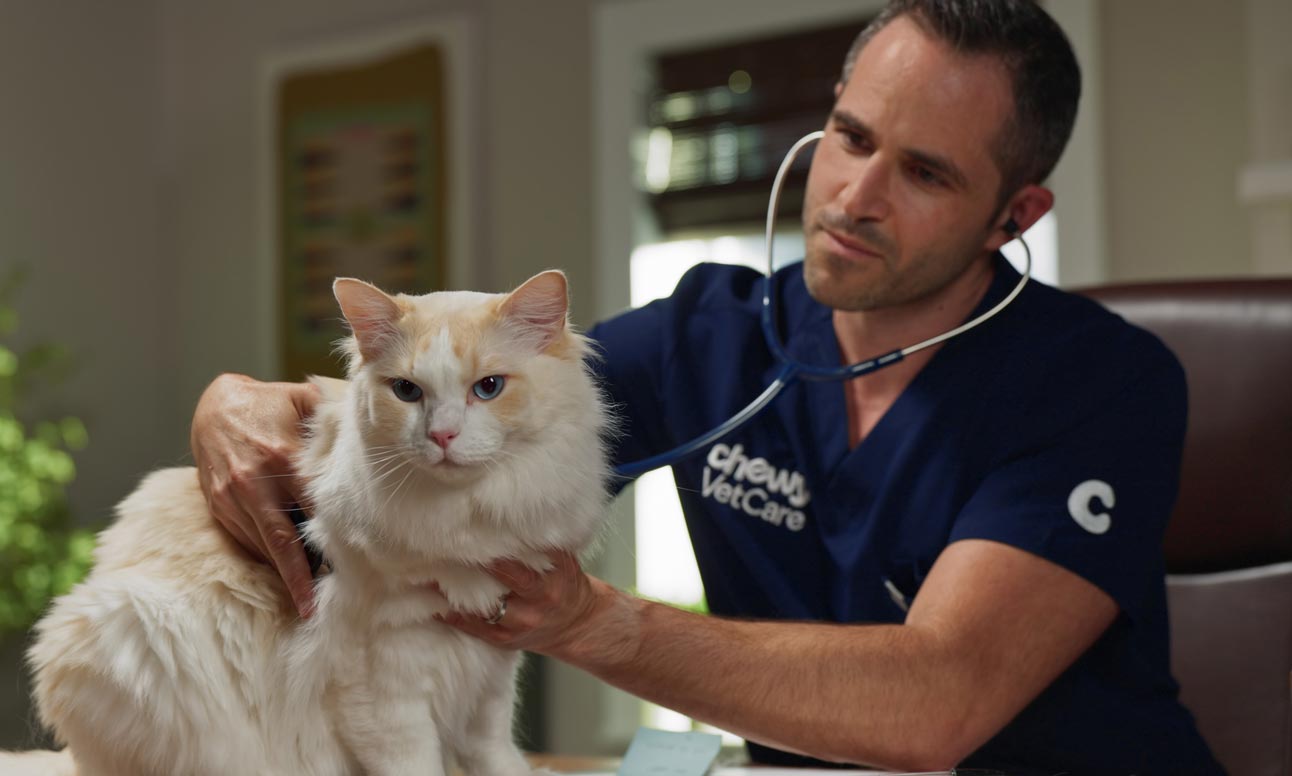
Photo by Chewy
Not only can your vet rule out or address underlying causes, but they can also provide customized recommendations for over-the-counter hairball diets or treatments that lend a helping hand to your cat’s digestive tract. They may recommend:
- Laxatives/lubricants: These help hairballs to pass more easily through your cat’s system. Try Cat Lax Cat Supplement, which is made with cod liver oil and petroleum, or Tomlyn Laxatone Hairball Remedy Tuna Flavor Gel Cat Supplement, which is formulated with white petroleum, mineral oil, and syrups.
Recommended Products
- Digestive supplements: These often include aids like fiber to support the intestinal tract and keep things moving, or provide ingredients that support a healthy haircoat. For example, Greenies Feline SmartBites Hairball Control Tuna Flavor Cat Treats are formulated with plant-based fiber.
Recommended Product
- Cat hairball control food: Fiber-dense foods, like Iams ProActive Health Indoor Weight & Hairball Care Dry Cat Food, can be fed to your cat instead of their regular food.
Recommended Product
Always remember to check with your veterinarian before changing diets or adding supplements for your cat.
FAQs About Cat Hairballs
How do I know if my cat has a hairball stuck?
If your cat repeatedly gags or coughs without bringing up a hairball, it could be stuck in their digestive tract. Other signs of a blockage include loss of appetite, lethargy, constipation, or vomiting without producing food. Contact your vet immediately if you notice these symptoms.
Is it normal for cats to have hairballs?
An occasional hairball (around once a month) is often normal, but frequent hairballs may signal an underlying issue, such as excessive grooming or gastrointestinal disease.
How can I help my cat pass a hairball?
In some cases, cat hairballs become so large they are unable to pass through the esophagus, stomach, or intestines. If you suspect your cat is having this issue, go to the vet immediately.
Attributions
Expert insight also provided by Sarah Cortright, DVM, veterinarian and chief medical director for the Underdog Community Project in Los Angeles, California.
